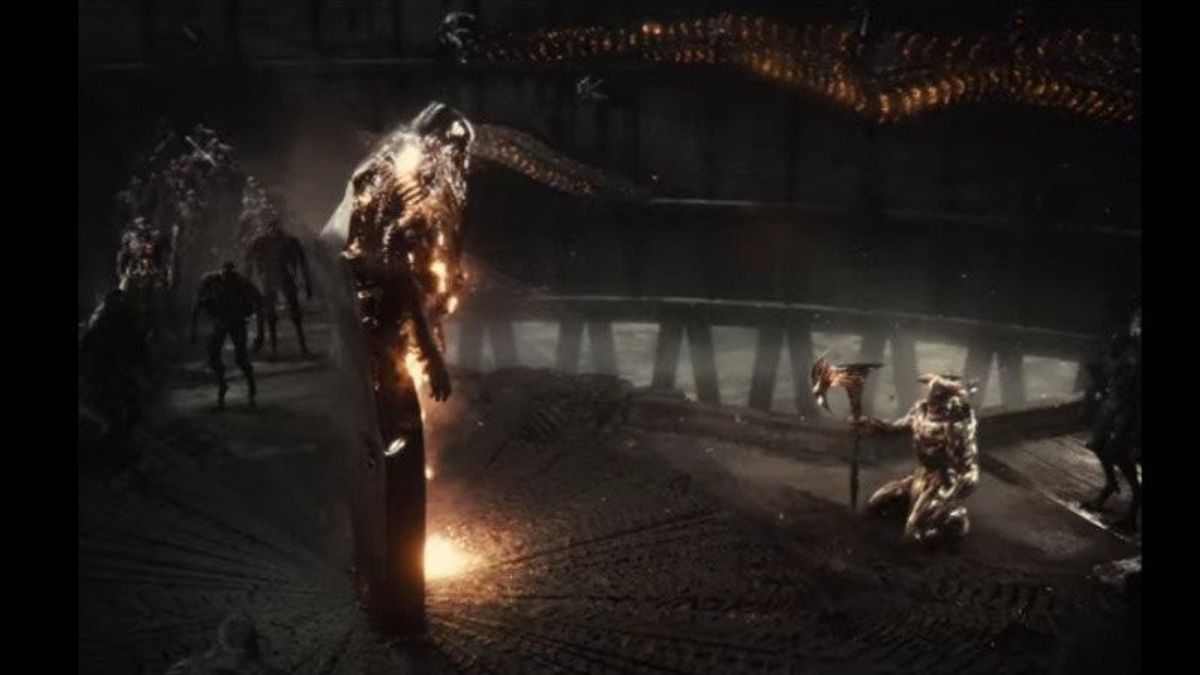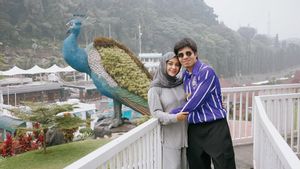JAKARTA - The Justice League: Snyder's Cut film will be shown on film streaming services starting March 18, 2021, with a 4:3 ratio format, making the film look boxy on the television screen.
This means that when you watch the movie stream, there will be two black lines appearing on the television on the right and left.
HBO Max starts the film with a short message: "This film is presented in 4:3 format to preserve the integrity of Zack Snyder's creative vision."
Justice League Zack Snyder was actually filmed by Snyder in a square frame. Surprisingly, this made Snyder Cut the first major superhero film to be featured in "Academy Ratio" (or something close to it), which was the cinematic standard in much of Hollywood's Golden Age, into the 1950s.
Snyder has several times spoken candidly about the unlikely choice of shooting Justice League in 1.33: 1 aspect ratio with a 35mm camera.
This choice stems from a reaction to Batman vs Superman: Dawn of Justice.
Snyder, like his colleague and friend Christopher Nolan, began experimenting with Batman vs Superman by shooting specific sequences in IMAX. The True IMAX film camera, which records images on a 65mm celluloid, produces an aspect ratio of 1.43:1, which is closer to the square.
And when Batman vs Superman: Dawn of Justice hit IMAX theaters in 2016, that meant the portion of the film shot on IMAX filled the entire IMAX screen. However, most of the movies not shot in IMAX only cover the center of the IMAX screen, with a more traditional 2.39:1 aspect ratio.
The 2.39: 1 aspect ratio has traditionally been the preferred format for the blockbuster action film in the last 20 years, as it provides the widest common frame for shooting film with a 35mm camera (and digital cameras mimic them) - in contrast to that, using 70 mm specially designed camera that can be wider.
But after seeing the alternating aspect ratios in Batman vs Superman: Dawn of Justice, Snyder concluded that he wanted all Justice League to have a uniform square frame that could fill the entire IMAX screen. And instead of shooting an entire film in IMAX - which has never been done due to the technical imitation of a large IMAX camera - Snyder opted to shoot the film at 35mm with an aspect ratio of 1.33:1.
The effect is almost indistinguishable from the Academy ratio of 1.37:1, which is the format used by classic cinema classics such as Citizen Kane, Casablanca, and The Adventures of Robin Hood (all of which are on HBO Max).
Before Snyder Cut, however, the aim was always to show films in a square frame in IMAX while cropping the top and bottom of the image for regular cinema (and possibly home media), creating an aspect ratio of 1.78:1, which is close to other Hollywood standards for screen use. wide. This is what Whedon Cut ended up doing.
In 2020, Snyder explained in Justice Con his reasons for releasing Snyder Cut in 4:3 frames on HBO Max (the closest 1.33: 1 TV standard) and abandoned his original plans to crop the image for big-screen televisions.
"What I mean is for the film, the whole film, to be played in a giant 4:3 aspect ratio on a giant IMAX screen. Superheroes tend, as figures, tend to be less horizontal. Maybe Superman when he flies, but when he stands up, he's more vertical. Everything was arranged and fired like that, and lots of restoration were trying to bring it back. Give this big box back… a completely different aesthetic. It just has a different and unusual quality. Nobody does that”.
Indeed, tinkering with what has generally considered an outdated aspect ratio is usually part of a lesser image of the house of art and prestige. For example, the famous Wes Anderson played with the sliding aspect ratio at The Grand Budapest Hotel, with different ratios for each of the three filming time periods.
Most recently, Robert Eggers' psychological horror-thriller The Lighthouse evokes an extreme. 1.19:1 rectangular frame, with vertical sides longer than the horizontal. This is the approach German filmmakers preferred in the era of silent films and the early period of sound films to a large extent. Kelly Reichardt's film First Cow, meanwhile, was shot with an Academy ratio of 1: 37.1.
Snyder seems to welcome this comparison, as he told The New York Times, "The aspect ratio is the same as First Cow. I think the two films have the same DNA. I really like the First Cow, actually. I would love it in a double feature. First Cow and Snyder Cut of Justice League. "
The English, Chinese, Japanese, Arabic, and French versions are automatically generated by the AI. So there may still be inaccuracies in translating, please always see Indonesian as our main language. (system supported by DigitalSiber.id)













